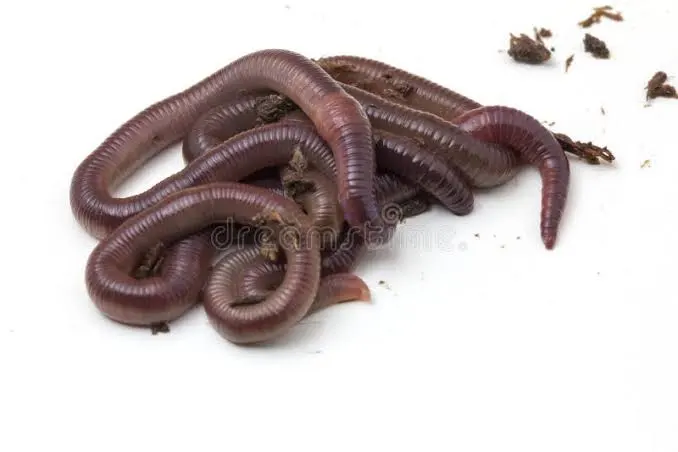
There’s just something about African Nightcrawlers that’s cool.
Just kidding, not Earth-63 Nightcrawler. Although he is cool. But I’m talking about a different kind of African Nightcrawler.
The real one.
The workm kind.
They’re quiet, humble creatures that work tirelessly beneath the surface, turning our food scraps into black gold — worm castings so rich that plants seem to leap to life after a taste. These tropical giants, Eudrilus eugeniae, are among the best composting worms for warm climates like the Philippines. But as powerful as they are, they’re also delicate — they demand the right balance of warmth, moisture, and care.
And if you get that balance right, they’ll reward you tenfold.
Why Choose African Nightcrawlers?
For anyone starting out in vermicomposting, Red Wigglers often get all the attention — and they’re great, no doubt. But African Nightcrawlers are in a different league when it comes to producing large volumes of rich, fine-textured castings.
They’re bigger, hungrier, and more active.
Each worm can grow up to 8 inches long, and a mature bin of nightcrawlers can process organic waste at an impressive rate. Their castings are often darker and finer than those of Red Wigglers, and gardeners swear by their quality.
If you want compost that feels like moist coffee grounds and smells like fertile forest soil, African Nightcrawlers are the way to go.
The best part? They thrive in our climate. While they’re native to tropical regions of Africa, they’ve found a second home here in Southeast Asia — where warmth and humidity are part of everyday life.
Setting Up the Perfect Home
Your worm bin doesn’t have to be fancy. You can use a recycled plastic tub, a wooden crate, or even a repurposed Styrofoam box. What matters most is the setup.
Here’s what your African Nightcrawlers need:
- Ventilation: Punch holes on the sides for air circulation. Worms breathe through their skin, so air matters.
- Drainage: Drill holes at the bottom for excess moisture. Stagnant water will suffocate them.
- Cover: A lid or cloth cover to keep predators and pests out, but still allow air in.
- Shade: Never place your bin under direct sunlight. A shaded outdoor area or a covered shed is ideal.
If you’re keeping them indoors, make sure it’s somewhere with good airflow and away from heat sources. These worms love temperatures between 24°C to 30°C — that’s right in our comfort zone. Anything above 35°C, though, and you risk losing them fast.
The Bedding
Bedding is what keeps your worms happy. It’s their world — their living, breathing environment. You can use shredded cardboard, coconut coir, or aged compost as a base. Some even mix in dry leaves or shredded newspaper for texture.
If you need any of those, we got it in our store.
Here’s the key:
Your bedding should be moist like a wrung-out sponge, not dripping wet. If it’s too dry, the worms will suffocate. Too wet, and they’ll drown. It’s that simple — and that important.
When you first add your worms, don’t feed them right away. Give them a day or two to settle into their new bedding. Think of it like letting new tenants move in before dropping off a buffet.
Feeding Your Nightcrawlers — What They Love and What They Don’t
African Nightcrawlers aren’t picky eaters, but they do best on a plant-based diet.
They’ll happily munch on:
- Vegetable scraps
- Fruit peels (except citrus)
- Coffee grounds and filters
- Crushed eggshells
- Old bread and grains
- Shredded paper and cardboard (non-glossy)
Avoid meat, dairy, oily food, spicy leftovers, and citrus. These not only mess up the pH balance but also invite flies and smell terrible after a few days.
Here’s a trick: chop or blend your kitchen scraps into smaller pieces before feeding. The smaller the pieces, the faster your worms can eat and process them. Always bury the food under the bedding — it keeps the surface clean and odor-free.
Feed once or twice a week. Start small, and don’t overfeed. If there’s uneaten food after a few days, hold off on adding more. Overfeeding is one of the biggest rookie mistakes in worm farming or caring for worms.
Harvesting the Castings
After about 2–3 months, you’ll notice the bottom layer of your bin turning dark, crumbly, and earthy-smelling — that’s pure gold right there.
There are two ways to harvest:
- The Migration Method – Push the old compost to one side of the bin and add fresh bedding and food on the other. Over time, the worms will migrate to the new side. Once they’ve moved, you can scoop out the finished compost.
- Light Exposure Method – If you’re patient, dump the contents on a plastic sheet under soft light. The worms will burrow down, and you can gently scrape off the top layers of compost until only worms remain.
The harvested compost can be mixed into potting soil, sprinkled over your garden, or steeped in water to make worm tea — a liquid fertilizer that’s great for houseplants.
Common Problems (and How to Fix Them)
- Worms climbing out: Check the moisture and pH. It might be too acidic or too wet. Add more dry bedding like cardboard to balance it.
- Bad smell: That’s a sign of overfeeding or poor aeration. Stir the contents lightly and let the bin breathe.
- Ants or flies: Bury food deeper and keep the bin moist but not soggy. You can also place the bin legs in shallow bowls of water to keep ants away.
- Worms dying suddenly: Check the temperature — it’s likely too hot or too cold. Keep your bin in a shaded, stable area.
Every vermicomposter goes through trial and error. What matters is paying attention — your worms will always tell you if something’s wrong, you just have to learn their language.
The Joy of Raising African Nightcrawlers
What’s beautiful about raising African Nightcrawlers is how meditative it can be. You start noticing small things — the texture of soil, the rhythm of feeding, the quiet life happening under layers of damp bedding.
You realize waste isn’t really waste; it’s just misplaced nutrition waiting to be recycled.
And if you’re into gardening, you’ll see the results right away. Your plants will grow faster, your soil will stay moist longer, and you’ll feel good knowing you’re reducing your household waste naturally.
That’s the magic of vermicomposting.
It’s a small act of care — for your worms, your garden, and the planet.

